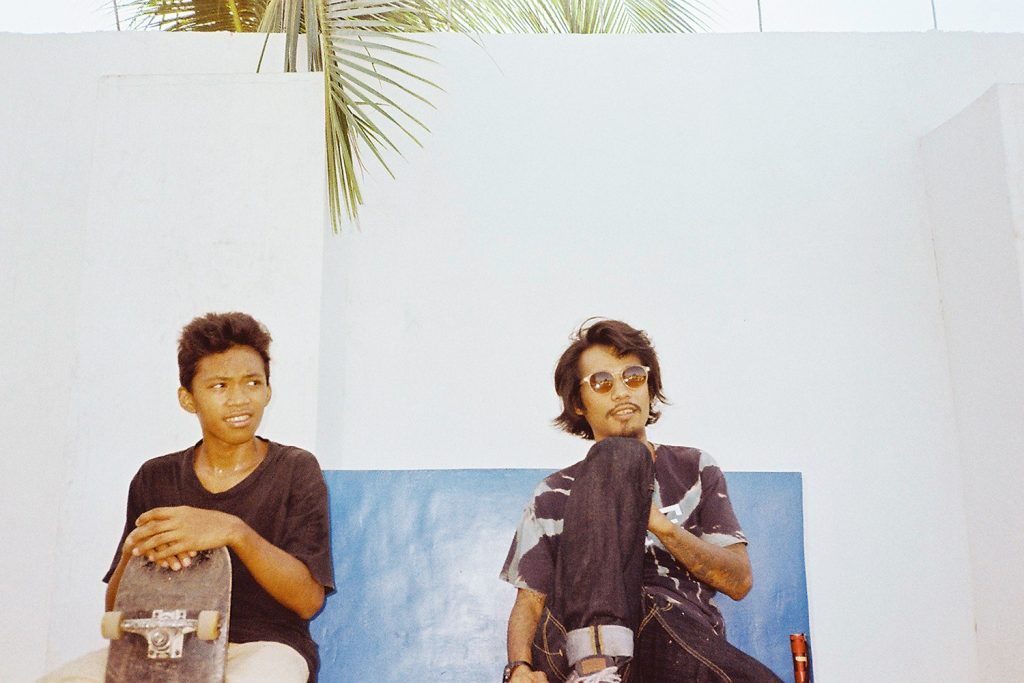Where have all the skaters gone? Where were they when I was growing up?
My first contact with the world of skateboarding was through a screen: vague snippets of MTV, Rocket Power, and Tony Hawk’s Pro Skater (and its wonderful, wonderful soundtrack). I heard the mixed surfer-skater slang (“Woogidy woogidy woogidy”), and I saw the dizzying superhuman feats of spinning so many degrees–the sense of danger at the core of it and the unflinching bravery despite it all. I wasn’t fazed by the awe-inspiring tricks as much as I imagined myself replicating the very same move. Seeing a 40-foot drop to a spiralling tunnel, just to get out with no scars or scrapes or cuts or even a hand to the knee didn’t feel human. But it wasn’t; it was the magic of TV, moving pictures through bright glass in a box.

In the provincial suburban neighborhoods I grew up in, the situation was a) either skaters were not present, or b) I didn’t pay attention to them enough for me to remember. Wherever I was, they weren’t. But I had a sense that they were there, somewhere. Every now and then I would search for scratches on the road only a skateboard could make. I would try to listen for the distinct sound of a skateboard’s wheels on concrete. Essayist Sean Wilsey wrote, “In a paved landscape skateboarders are both dangerous and invisible, inhabitants of the interstices—rats, the city a series of tunnels and chutes, skaters perfectly adapted.” Between the pedestrians commuting in mass transit and the loud motorized vehicles dotting the roads time and time again, the skater is perhaps the city’s best intimate, and also its worst, violator. By rail, ramp, curb, or stair, if it can be explored by the board, it will.
History paints skateboarding as a culture born out of outcasts and throwaways finding freedom in a plank bolted with two sets of wheels. And like with every culture that gets popular, skate culture has been dissected, commodified, and appropriated, and the culture’s way of dressing up has become another pool the fashion world can siphon into new trends. From Vogue’s “Skate Week” that includes styling tips for a I-haven’t-showered-or-had-a-real-meal-in-two-days look to Thrasher tees making its way to the backs of non-skating celebrities, the actions and reactions have left out the contradictions in skateboarding: how do you set boundaries and take control when a refusal for boundaries is what you’ve been known for?
And so the Scout team went to Vitas Park in Tondo for some answers. Funnily enough, we didn’t find any. The skate park is not the place deep conversation, for discourse. It’s a zone of flux. It’s a visceral space. And a safe and relaxed one, too. There are no kings or queens on the pavement.
“Sa grupo namin wala kaming leader. Having a leader. . .para kang tupa na sumusunod sa nagpapastol sa ‘yo. Damn, I nailed it!” – Jing, Tondo Fucking Krew
The skate park is sanctuary, sacrament, and arbiter to the skater whose only focus is to perform the next trick with self-satisfactory success. When the trick is made, the next goal is set. And so on. There’s seldom any time and space to stay still. In other words, they don’t give a fuck.
It’s a contact high, watching other people rip every surface their board touches with my very own eyes. When will the gaze linger? After all, for one to truly understand something, one must try it.
Special thanks to Jing and the rest of Tondo Fucking Krew and Ema
This article was originally published in our January-February 2017 issue and has been edited for web. View the full issue online here. For physical copies, our delivery locations are listed here.
Photography by Anthony Marquez